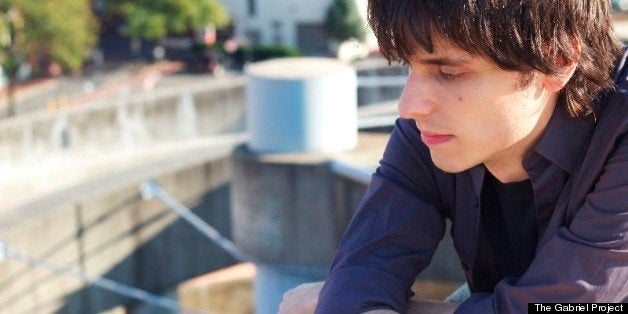
Born in Maryland, Gabriel Riccio now lives in Chicago where he has adopted the pseudonym The Gabriel Construct. Under this name, he has constructed his thematic album Interior City. The album musically narrates Gabriel's dual existence, the dark side and the light side. To escape the outside world, he retreats to an internal phantom metropolis. While this may sound a bit gothic, for Gabriel these separate realities, at times, were real. These conjoined existences are what he recounts in his music.
Dominated by acoustic piano, Interior City ranges from solo piano passages to layers of harsh, inharmonious sections. The music comes across as ominous and experimental. Gabriel refers to his music as progressive. To find an alternative string sound, he plucks the inside of his piano. The songs are made complex by musical suites that stretch out. He also sings, albeit, raw and disquieting.
As many of us often experience, Gabriel's dual realities clash. The interior city is the place to escape from the outside world, but the interior city is dark. It has thoughts of paranoia, conspiracy theories, self-loathing and aliens. For Gabriel, the time has arrived for a personal healing as well as a universal healing. A universal healing because that dark internal place is where people justify hurting other people and hurting the environment.
But, healing comes by confronting the demons. Hence -- the album cover renders a faceless person existing in a colorful environment; nevertheless, his heart holds the foreboding city. The song, "Fear of Humanity," speaks about wanting to escape the internal city and its menacing behavior. Still, for Gabriel, that dark menacing place has an attract/repel dynamic and "Arrival in a Distant Land" addresses this experience while "Ranting Prophet" speaks about the deconstructing and rebuilding of one's life. There is a light at the end of the tunnel expressed in his song "Curing Somatization" where he shares his holistic therapeutic experience, reminding his listeners that life is cyclical.
Gabriel hopes you listen to the album from start to finish because he also wants to make progressive rock truly progressive again. His goals for Interior City are to do what musicians did in the 1960s, when some rock bands such as Jethro Tull, Pink Floyd, Moody Blues and Genesis favored instrumentation and composition techniques associated with jazz and classical music. This early form of progressive music was an effort to elevate rock to the same sophisticated and respectful place that jazz inhabited. Gabriel Riccio, too, wants to integrate the ideas from other genres into rock music.
Although Gabriel was the creator of Interior City, it wouldn't have happened without the help of other creative musicians. The Gabriel Construct project that gave birth to Interior City had drummer Travis Orbin and bassist Tom Murphy, both from the progressive metal band, Periphery. Completing the band were guitarist David Stivelman, violinist Sophia Uddin and saxophonist Soren Larson.
So -- if you are one of those many people who have found themselves living in two worlds at once, and perhaps one of those worlds has a soft spot for progressive rock music, you might find the album's theme helpful in reconstructing two worlds into one.
You can listen to The Gabriel Construct's debut album Interior City on BandCamp.